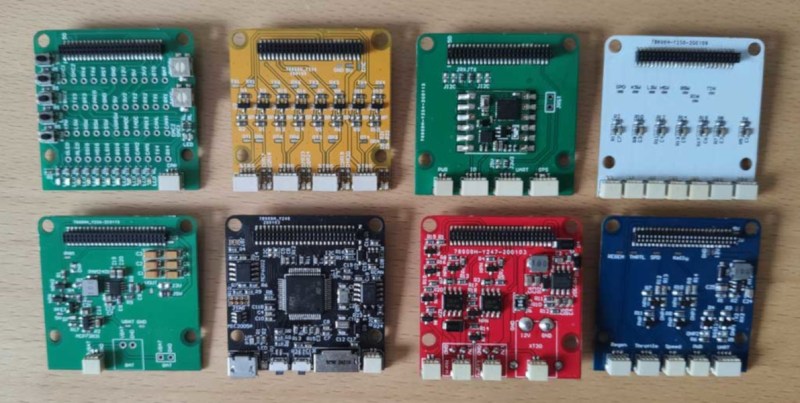There’s no better way of improving a project than logging data to make informed decisions on future improvements. When it came to [Brian]’s latest project, an electric bike, he wanted to get as much data as he could from the time he turned it on until the time he was finished riding. He turned to a custom pyBoard-based device (and wrote it up on Hackaday.io), but made it stackable in order to get as much information from his bike as possible.
This isn’t so much an ebike project as it is about a microcontroller platform that can be used as a general purpose device. All of the bike’s controls flow through this device as a logic layer, so everything that can possibly be logged is logged, including the status of the motor and battery at any given moment. This could be used for virtually any project, and the modular nature means that you could scale it up or down based on your specific needs. The device is based on an ARM microcontroller so it has plenty of power, too.
While the microcontroller part is exceptionally useful ([Brian] talks about some of its other uses here and gives us even more data on his personal webpage), we shouldn’t miss the incredible bike that [Brian] built either. It has a 3 kW rear hub motor and can reach speeds of around 60 mph. While we let the commenters below hash out the classic argument of “bicycle vs. motorcyle” we’ll be checking out some electric vehicles that are neither.
















No pedals, it’s not a bike.
bike
/bīk/
noun
a bicycle or motorcycle
which ever way you look at it its not a PUSH bike (unless the batteries go flat)
The bike is a whole bunch of clever design features, but I’d love to see what else is going on in the workshop behind it.
There does look there is some neat stuff going on in that shed,
“he wanted to get as much data as he could from the time he turned it on until the time he was finished riding”
So drop in a VESC and be done?
RPM, voltage, current, temperature…what else is there to monitor, anyway?
Accelerometers to measure incline and vehicle acceleration
Airspeed to compare to ground speed so windage can be taken into account
Load cell on the seat to factor in driver weight
That’s all I got…
Themocouples to measure different locations on the motor, inverter, ambient.
I have played around with VESCs but they don’t natively support the high voltage or current needed. I do like the VESC design and software. This however is more general solution that could be retrofit on anyone’s machine.
👁️👁️ BUT is it driverless? BAM, that’s the xnix baby, the xnix.
RASBERRY PI ZERO W, two of them. one on the wheele, and the other on the bike. The one in the wheele would take care of propultion, and the one on the bike would sample the throttle, and sense speed, and other things. Total computer costs $20.00.
You wanna be careful making suggestions like that, the wrencher fairy might sneak into your house one night and put Pis in every one of your appliances that has got a microcontroller… making sure they all have class 1 SD cards so you really get the point.